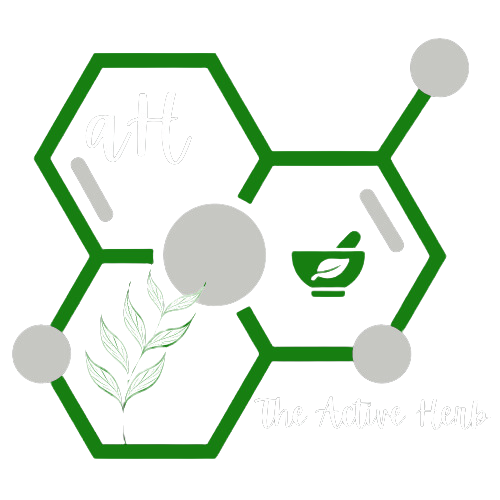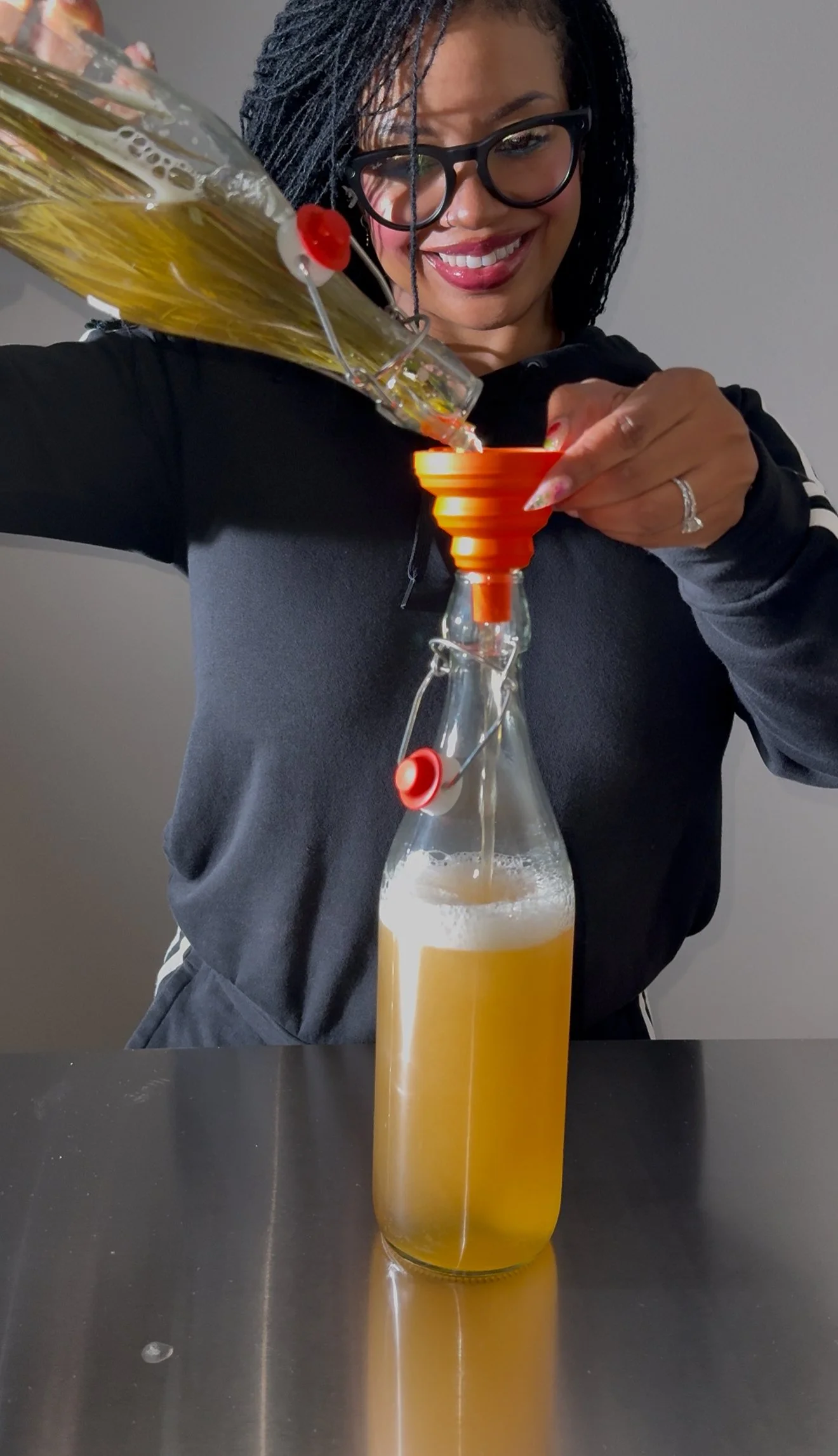Forest Fizz: The History and Science of Pine Needle Soda
Day 4: Straining Day
The Pine Needle Soda was good and fermented at Day 4. See the bubbles. So many bubbles…..
A Forest Tradition with Deep Roots
Pine needle soda might feel like a modern wild fermentation trend, but this practice stretches back centuries. Indigenous communities and early European settlers were already steeping pine needles into teas, infusions, and lightly fermented drinks long before commercial sodas ever existed. Pine was abundant, evergreen, and easy to work with year-round, making it a natural choice in regions where winter limited access to fresh plants.
In North America, Eastern White Pine (Pinus strobus) and other edible pine species became a familiar ingredient during the colder months. People would steep the fragrant needles in hot water, sweeten the liquid, and allow it to ferment gently at room temperature. This slow process, powered by wild yeast in the environment, created a softly sparkling drink with a clean, resinous flavor.
Across northern Europe, spruce and fir infusions played a similar role. Scandinavian and early Canadian settlers made traditional spruce beers, often brewed in wooden barrels. These drinks were refreshing, slightly tart, and carried that distinctive aroma of fresh evergreen forest.
Pine and spruce based beverages weren’t just about refreshment. They were deeply tied to local ecology and seasonal rhythms. Pine was easy to identify, easy to gather, and stayed vibrant even in freezing weather. It was the perfect ingredient to carry into winter.
How Traditional Pine Needle Soda Was Made
Early methods were simple and relied on natural processes. Fresh needles were gathered, rinsed, and steeped in warm water to extract their terpenes — the aromatic compounds that give pine its fresh, forest scent. Sweeteners were then added to give the wild yeast something to feed on. Over the course of a few days, the yeast converted sugars into carbon dioxide, creating natural bubbles.
The mixture was often stored in glass or ceramic vessels, covered loosely with cloth, or sealed with cork to trap carbonation. It was consumed quickly, usually within a week, while the flavor was light and effervescent.
Sugar Sources Then and Now
Sweetener is the fuel that powers fermentation. Historically, the choice of sugar depended on what was locally available.
Maple syrup: In northeastern North America, maple sap was boiled into syrup and used in all kinds of seasonal recipes. Maple syrup ferments beautifully, creating a firm and lively fizz.
Honey: Common across many regions, honey ferments more slowly because of its antimicrobial properties, resulting in a gentler sparkle and delicate floral undertones.
Molasses: Widely used by settlers, molasses brings a deep, earthy sweetness and can create a bold, aromatic soda.
Cane sugar and beet sugar: These came later with trade expansion and produce a clean, neutral flavor.
Today, you can choose your sweetener to shape both the fermentation behavior and the flavor profile. Maple gives brisk bubbles. Honey creates softness. Molasses adds a nostalgic, old-world depth.
The Science Behind the Fizz
Fermentation is one of the oldest biochemical processes used by humans. When you add sugar to water and allow wild yeast to thrive, the yeast consumes the sugar and produces carbon dioxide (CO₂) and trace ethanol as byproducts. When this happens inside a closed container, the CO₂ becomes trapped and dissolves into the liquid. Once opened, the gas escapes and creates that satisfying, natural fizz.
Pine needles don’t contribute the yeast. Instead, it’s the environment — the air, the bottle, and sometimes the surface of the plant — that carries the microorganisms needed to start fermentation. Warmth speeds the process. Cold slows it down.
The terpenes in pine (like α-pinene and bornyl acetate) give the soda its bright, green, woodsy character. When combined with natural acids from citrus or other ingredients, the flavor is layered and crisp.
Choosing the Right Pine
Not all pines are created equal. Only certain species are safe for consumption.
Safe species: Eastern White Pine (Pinus strobus), Red Pine (Pinus resinosa), Fir, and Spruce.
Avoid: Ponderosa, Yew (not a pine but sometimes mistaken for one), Norfolk Island Pine, and Lodgepole.
Identifying your tree correctly is critical. Always source from clean areas, away from heavy road traffic, pesticides, or treated wood.
How to Identify the Right Pine
Correct identification matters. Not all evergreens are edible and some can be toxic. The good news is that pine species are surprisingly easy to tell apart once you know what to look for. Here are a few clear markers to help you spot safe types like Eastern White Pine and avoid look-alikes such as Yew or Norfolk Island Pine.
1. Count the Needles in Each Bundle
Pine needles grow in clusters called fascicles.
Eastern White Pine: 5 long, soft, flexible needles per bundle. This is the most common edible variety in the eastern U.S.
Red Pine: 2 needles per bundle, slightly stiffer, medium length.
Loblolly Pine: 3 needles per bundle, but flavor is more bitter.
Avoid Yew: It has single flat needles with a prominent midrib, not bundles.
A quick trick: If you can gently bend the needles without them snapping, and they grow in bundles, you’re likely looking at a true pine.
2. Look at the Needle Length and Texture
Edible pines tend to have longer, soft, flexible needles.
Toxic or inedible look-alikes may have short, stiff, or flat needles.
Eastern White Pine needles are typically 3 to 5 inches long and have a slightly bluish tint.
3. Examine the Cones
Pine cones are woody and open as they mature.
Eastern White Pine cones are long and slender with soft, flexible scales.
Yew produces small red berry-like structures (technically arils), which is a clear warning sign. If you see those, it is not a true pine.
4. Observe the Bark and Growth Pattern
True pines have rough, scaly bark with a pattern of long vertical plates as they age.
Yew bark is smooth when young and does not flake the same way.
Norfolk Island Pine looks more like a tropical Christmas tree with evenly spaced whorls and short, feathery needles.
5. Smell Test
Crush a needle between your fingers.
Edible pines release a sharp, clean, resinous scent that’s unmistakably “piney.”
Yew has a dull, planty smell and Norfolk often smells faintly grassy or not at all.
6. Seasonal Clues
Pine trees are evergreen, so they’re easy to identify in winter.
Eastern White Pine tends to grow tall and straight with soft clusters that almost look “fluffy” from a distance.
Safety Reminder
Avoid Ponderosa, Yew, Norfolk Island Pine, Lodgepole, and Yellow Pine.
Stick to Eastern White Pine, Red Pine, Fir, or Spruce.
Always harvest from areas away from roadways, pesticides, or treated wood.
If unsure, cross-check with a field guide or a local forestry extension office.
Tip for beginners: If the tree has 5 soft needles per bundle and smells clean and woodsy when crushed, it’s very likely Eastern White Pine — one of the best options for soda making.
Modern Pine Needle Soda Method
You’ll need:
1 whole pine cutting or 1 cup of chopped edible pine needles
2½ cups of water
1½ to 2 tablespoons of sweetener (maple syrup, honey, or molasses)
A clean swing-top bottle or fermentation-safe glass container
Steps:
Warm the water to about 100°F (just warm to the touch).
Stir in your sweetener until dissolved.
Place the pine cutting into the bottle.
Pour the sweetened water over it, leaving about an inch of headspace.
Seal and let sit at room temperature for 3 to 5 days.
Burp the bottle daily to prevent overpressure.
Once you hear a soft hiss or see bubbles forming, refrigerate to slow the fermentation.
The result is a crisp, refreshing, lightly sparkling drink that captures the aroma of the forest. Add a squeeze of lemon or lime to brighten the flavor.
Flavor Notes
Pine needle soda is known for its clean, resinous base flavor with a subtle sweetness. Maple syrup gives caramel undertones. Honey adds floral notes. Molasses deepens the body of the soda with an old-world richness. When paired with citrus, the drink takes on a lively, almost sparkling lemonade quality, only greener and earthier.
A Living Tradition
Pine needle soda isn’t just a drink. It’s a living example of how traditional knowledge and natural science intertwine. This practice carried through generations because it used what was already present in the landscape. No commercial yeast. No factories. Just time, patience, and a connection to place.
Today, reviving this simple tradition connects us not only to flavor but also to history itself.
Disclaimer:
This blog is for educational purposes only. Always ensure correct plant identification and use food-safe fermentation methods. Fermentation outcomes may vary depending on environment and materials.


